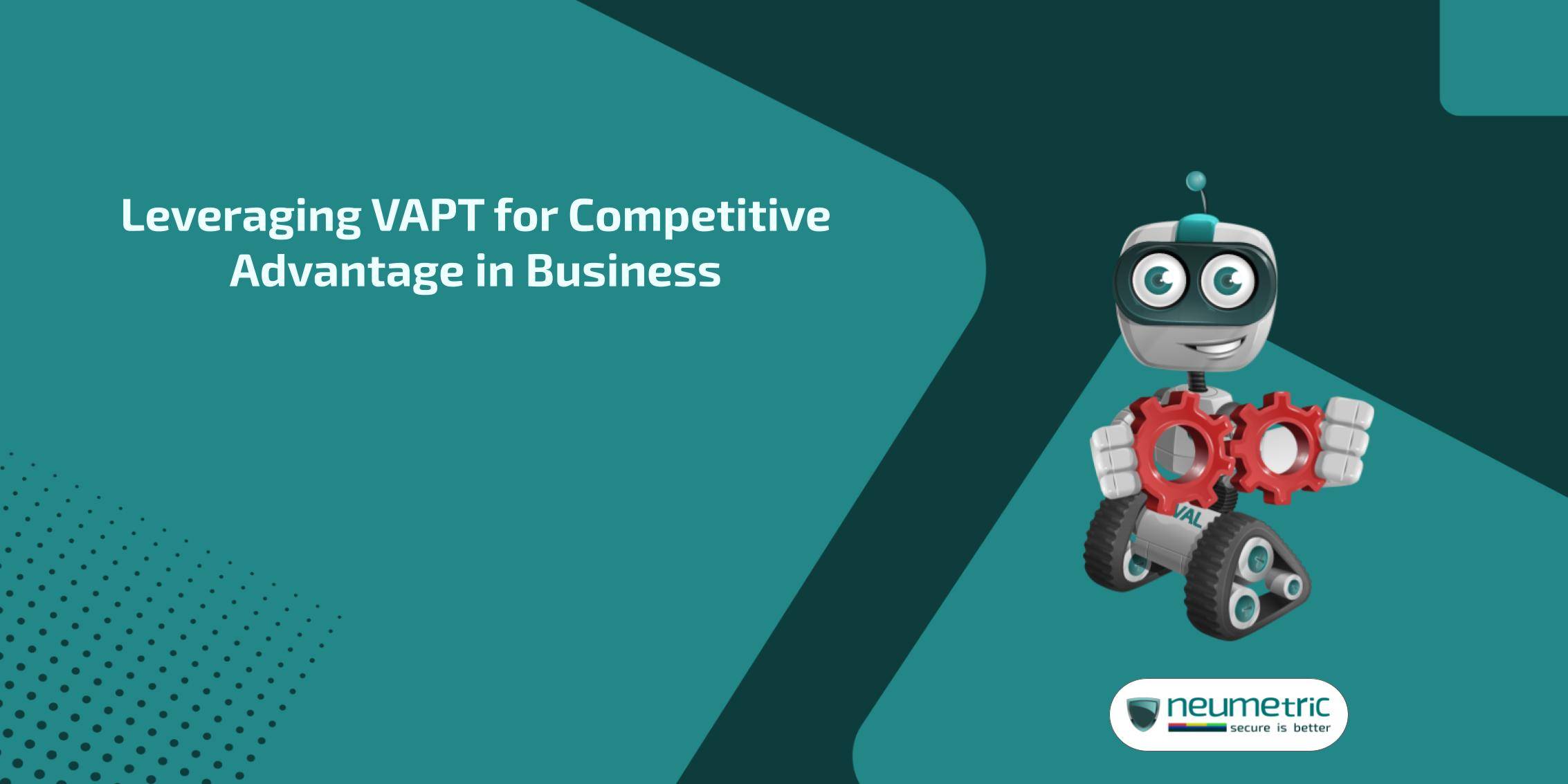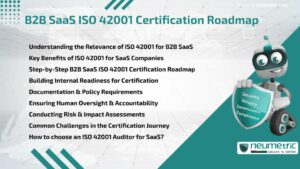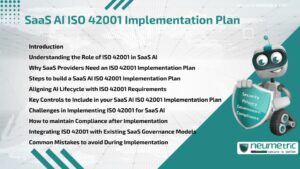Table of Contents
ToggleLeveraging VAPT for competitive advantage in business
Introduction
As enterprises increasingly rely on digital platforms, the vulnerability to cyber threats has become a pressing concern. The rise of sophisticated cyberattacks underscores the critical importance of fortifying digital infrastructure against potential breaches. This is where Vulnerability Assessment & Penetration Testing [VAPT], emerges as a proactive & strategic weapon in the arsenal of cybersecurity.
VAPT, a combined process involving Vulnerability Assessment [VA] & Penetration Testing [PT], is a comprehensive approach to identifying & addressing potential security weaknesses within an organisation’s information systems. VA focuses on systematically evaluating vulnerabilities, while PT involves simulated attacks to gauge the effectiveness of existing security measures. Together, they provide a holistic view of a system’s security posture.
A single security breach can result in not only financial losses but also irreversible damage to a company’s reputation. With customer trust at the forefront of business success, organisations are compelled to adopt robust cybersecurity measures to safeguard sensitive information & maintain operational integrity.
VAPT goes beyond merely fortifying defences, it becomes a strategic enabler for businesses aiming to gain a competitive edge. Beyond mere compliance with industry standards, it empowers organisations to stay ahead of emerging threats, demonstrate commitment to customer security & navigate the complex landscape of regulatory requirements. This Journal will delve into the multifaceted ways in which businesses can leverage VAPT as a proactive tool for enhancing their competitive advantage.
Key goals of VAPT
Comprehensive risk identification
- Identifying vulnerabilities across the entire IT infrastructure
- Assessing potential risks associated with each vulnerability
- Prioritising risks based on their impact & likelihood
Proactive vulnerability mitigation
- Developing strategies to address identified vulnerabilities
- Implementing patches, updates or security measures
- Iterative testing & validation of mitigation efforts
Integration of VAPT into business strategy
Effectively leveraging Vulnerability Assessment & Penetration Testing [VAPT] involves aligning these cybersecurity practices with broader business goals. This section will explore the strategic integration of VAPT into an organisation’s overall business strategy, emphasising its role in risk management & the software development lifecycle.
Aligning VAPT with overall business goals
- Strategic alignment
- Understanding how VAPT aligns with the core objectives of the organisation.
- Ensuring VAPT contributes to, rather than hinders, business growth.
- Stakeholder involvement
- Involving key stakeholders in the decision-making process.
- Communicating the strategic importance of VAPT across departments.
Role of VAPT in risk management
- Proactive risk identification
- Identifying potential risks & vulnerabilities before they can be exploited.
- Establishing a risk register for ongoing assessment.
- Risk prioritisation & mitigation
- Prioritising risks based on severity & potential impact.
- Developing & implementing mitigation strategies.
Incorporating VAPT in the Software Development Lifecycle [SDLC]
- Secure by design
- Integrating security considerations from the initial stages of development.
- Embedding VAPT into the development process, from design to deployment.
- Continuous testing & iterative improvements
- Emphasising the importance of continuous VAPT throughout the SDLC.
- Learning from each testing cycle to enhance security measures.
Demonstrating business value
- Return on Investment [ROI]
- Quantifying the value of VAPT in terms of potential cost savings.
- Showcasing how proactive security measures contribute to overall ROI.
- Competitive differentiation
- Positioning VAPT as a competitive advantage in the market.
- Communicating the commitment to security as a brand differentiator.
By seamlessly integrating VAPT into the fabric of business strategy, organisations can proactively manage risks, fortify their digital infrastructure & position themselves as leaders in an ever-evolving cybersecurity landscape. The strategic incorporation of VAPT ensures that cybersecurity is not merely a compliance checkbox but a dynamic force driving business resilience & growth.
Benefits of VAPT for competitive advantage
Vulnerability Assessment & Penetration Testing [VAPT] go beyond securing digital assets; they serve as a strategic tool for organisations seeking a competitive edge in the dynamic business landscape. This section will dissect the multifaceted benefits of VAPT, ranging from proactive risk mitigation to building customer trust & navigating regulatory landscapes.
Identifying & addressing vulnerabilities
- Early detection of potential weaknesses in the IT infrastructure.
- Proactive measures to address vulnerabilities before they are exploited.
- Reducing the window of opportunity for potential cyber attackers.
Reducing the likelihood of data breaches
- Mitigating the risk of data breaches by fortifying security measures.
- Protecting sensitive customer information & intellectual property.
- Preserving brand reputation & customer trust.
Building customer trust & loyalty
- Communicating transparently about cybersecurity measures in place.
- Assuring customers that their data is handled with the utmost care.
- Building a reputation as a trustworthy & secure business partner.
Gaining a competitive edge in the market
- Positioning cybersecurity as a key differentiator in the market.
- Attracting security-conscious customers & partners.
- Securing a competitive advantage in industries where trust is paramount.
- Regulatory Compliance & Market Access.
Meeting industry standards & regulations
- Ensuring compliance with industry-specific cybersecurity standards.
- Navigating complex regulatory landscapes with confidence.
- Avoiding legal repercussions & penalties associated with non-compliance.
Expanding business opportunities through compliance
- Opening doors to new markets by meeting stringent cybersecurity requirements.
- Gaining a competitive advantage in sectors where compliance is a prerequisite.
- Fostering partnerships & collaborations with confidence in security measures.
As businesses navigate the intricate realms of cybersecurity, the benefits of VAPT extend far beyond securing data. By actively leveraging these practices, organisations position themselves not only as resilient entities in the face of cyber threats but also as trustworthy partners capable of providing a secure & reliable environment for customers & collaborators alike. VAPT, therefore, emerges as a cornerstone in the foundation of competitive advantage in the modern digital landscape.
Selecting the right VAPT approach
Choosing the appropriate approach to Vulnerability Assessment & Penetration Testing [VAPT] is a critical decision that organisations must make. This section will explore the considerations & decision-making processes involved in selecting the right VAPT approach, whether it’s in-house or outsourced & whether it should be continuous or periodic.
In-house VAPT
Pros:
- Full control & visibility over the process.
- Immediate response to emerging threats.
- Tailoring the approach to specific organisational needs.
Cons:
- High upfront costs for infrastructure & skilled personnel.
- Continuous training & skill maintenance challenges.
- Limited scalability for large-scale projects.
Outsourced VAPT
Pros:
- Access to specialised expertise without hiring in-house.
- Cost-effective for organisations with limited resources.
- Scalability for diverse projects & requirements.
Cons:
- Limited control & visibility into the testing process.
- Dependency on external providers for timely responses.
- Potential security concerns related to data sharing.
Continuous VAPT
Benefits:
- Real-time monitoring & immediate threat response
- Ongoing risk assessment in dynamic environments
- Adapting to evolving cybersecurity landscapes
Challenges:
- Resource-intensive for constant monitoring
- Potential for alert fatigue among security teams
- Balancing continuous testing with business operations
Periodic VAPT
Benefits:
- Structured testing at planned intervals
- Allows for focused attention on specific areas
- Easier integration with development cycles
Challenges:
- Risk of overlooking emerging threats between testing periods
- Limited visibility into evolving attack vectors
- Potential for delayed response to new vulnerabilities
As organisations navigate the decision-making process of selecting the right VAPT approach, they must weigh the advantages & disadvantages of in-house versus outsourced services & determine the frequency that best suits their cybersecurity needs. Striking the right balance ensures that VAPT becomes an effective & integral part of the organisation’s overall cybersecurity strategy, contributing to a resilient & secure digital environment.
Conclusion
As we conclude our exploration into the world of Vulnerability Assessment & Penetration Testing [VAPT], it becomes evident that this dynamic cybersecurity strategy is not merely a technical necessity but a strategic imperative for businesses seeking to thrive in the digital age. The journey through the various facets of VAPT, from understanding its intricacies to exploring its strategic integration, benefits & future trends, underscores its pivotal role in shaping a resilient & competitive business environment.
FAQ’s
What is VAPT & why do businesses need it?
VAPT or Vulnerability Assessment & Penetration Testing, is a cybersecurity practice that involves identifying & addressing potential weaknesses in a company’s digital infrastructure. Businesses need it to proactively secure their systems, prevent data breaches & stay ahead of evolving cyber threats.
How often should a company conduct VAPT?
The frequency of VAPT depends on various factors, including the organisation’s risk tolerance & the nature of its operations. Some organisations opt for continuous testing, while others conduct periodic assessments. The key is to find a balance that suits the specific needs of the business.
What role does VAPT play in building customer trust?
VAPT demonstrates a commitment to security, showcasing that a business takes the protection of customer data seriously. This transparency builds trust among customers, making them more confident in choosing & remaining loyal to a secure business partner.
Can VAPT be done in-house or is outsourcing a better option?
The decision between in-house & outsourcing depends on factors like budget, expertise & scalability. In-house VAPT provides control but can be resource-intensive, while outsourcing offers specialised skills & cost-effectiveness. The choice depends on the organisation’s unique requirements.
How does VAPT contribute to regulatory compliance?
VAPT helps businesses adhere to industry-specific cybersecurity standards & regulations. By identifying & addressing vulnerabilities, organisations can ensure compliance, avoid legal issues & gain access to markets that require stringent security measures.





